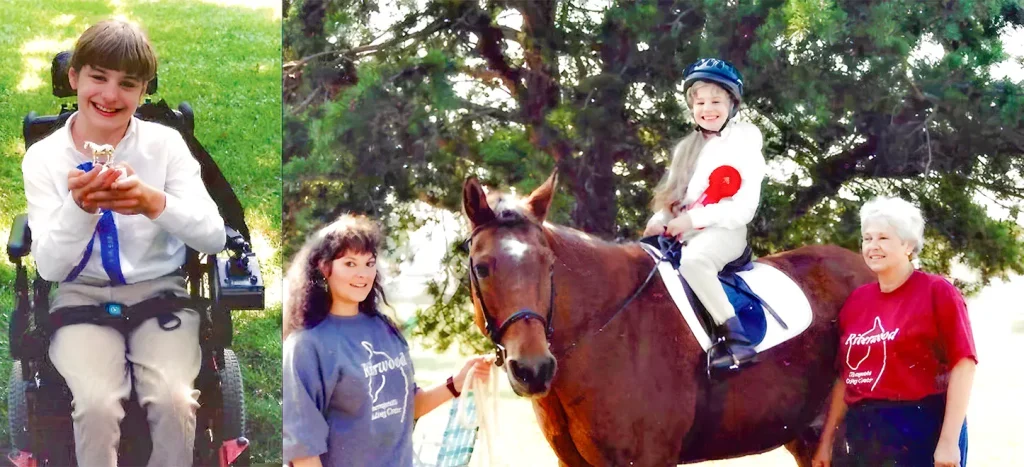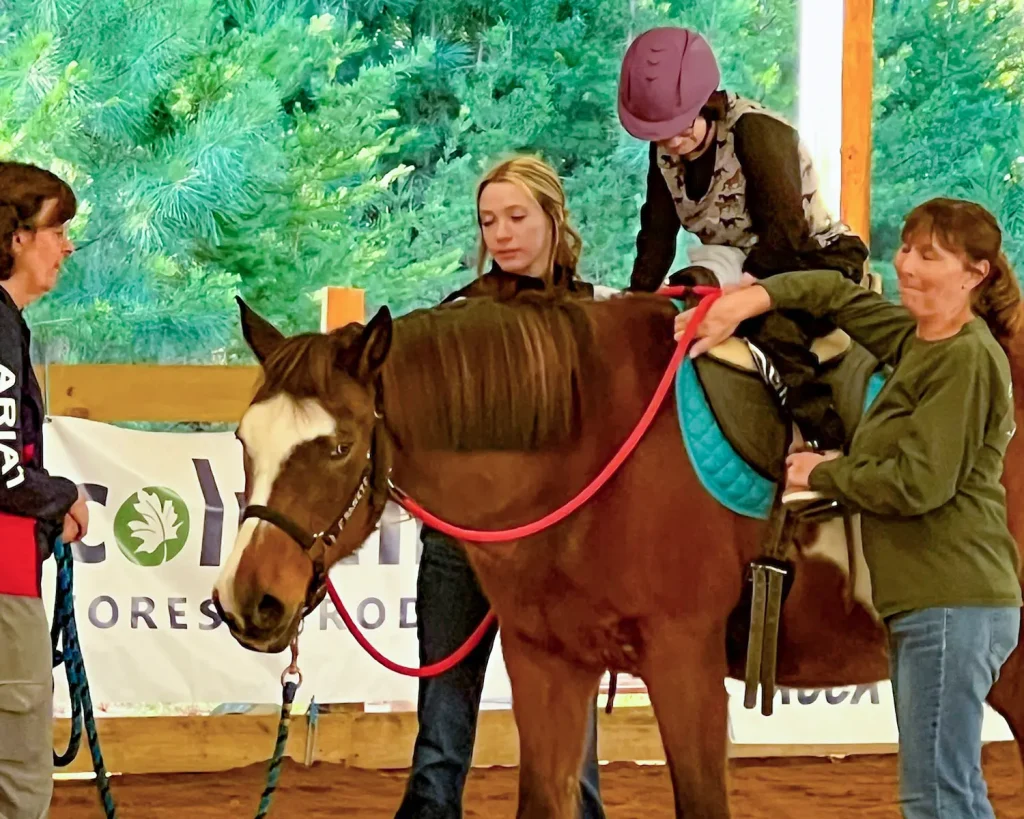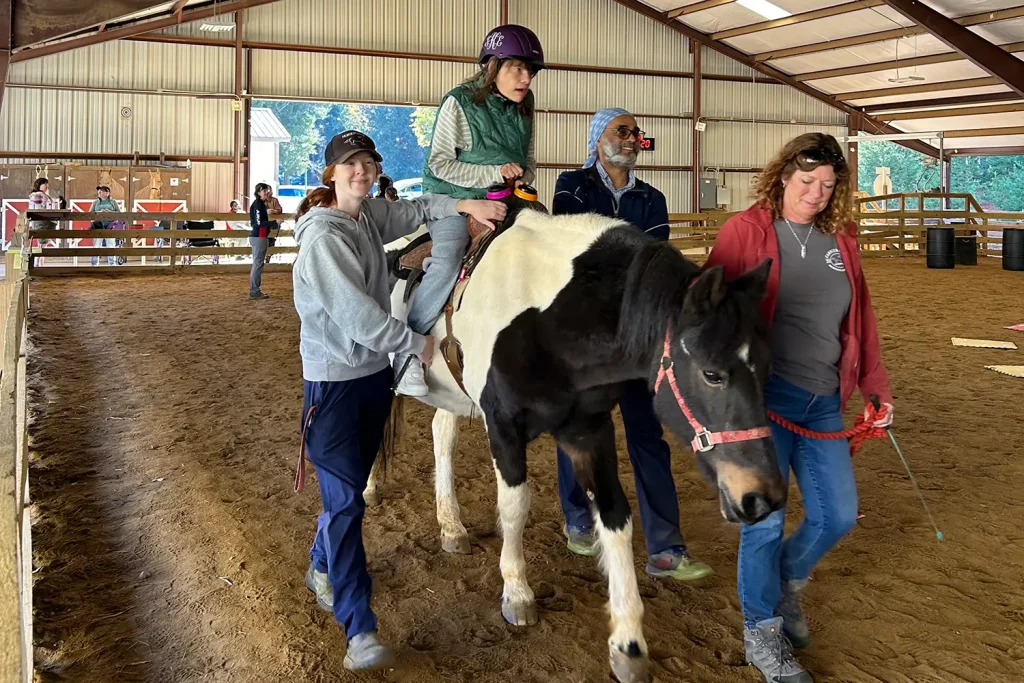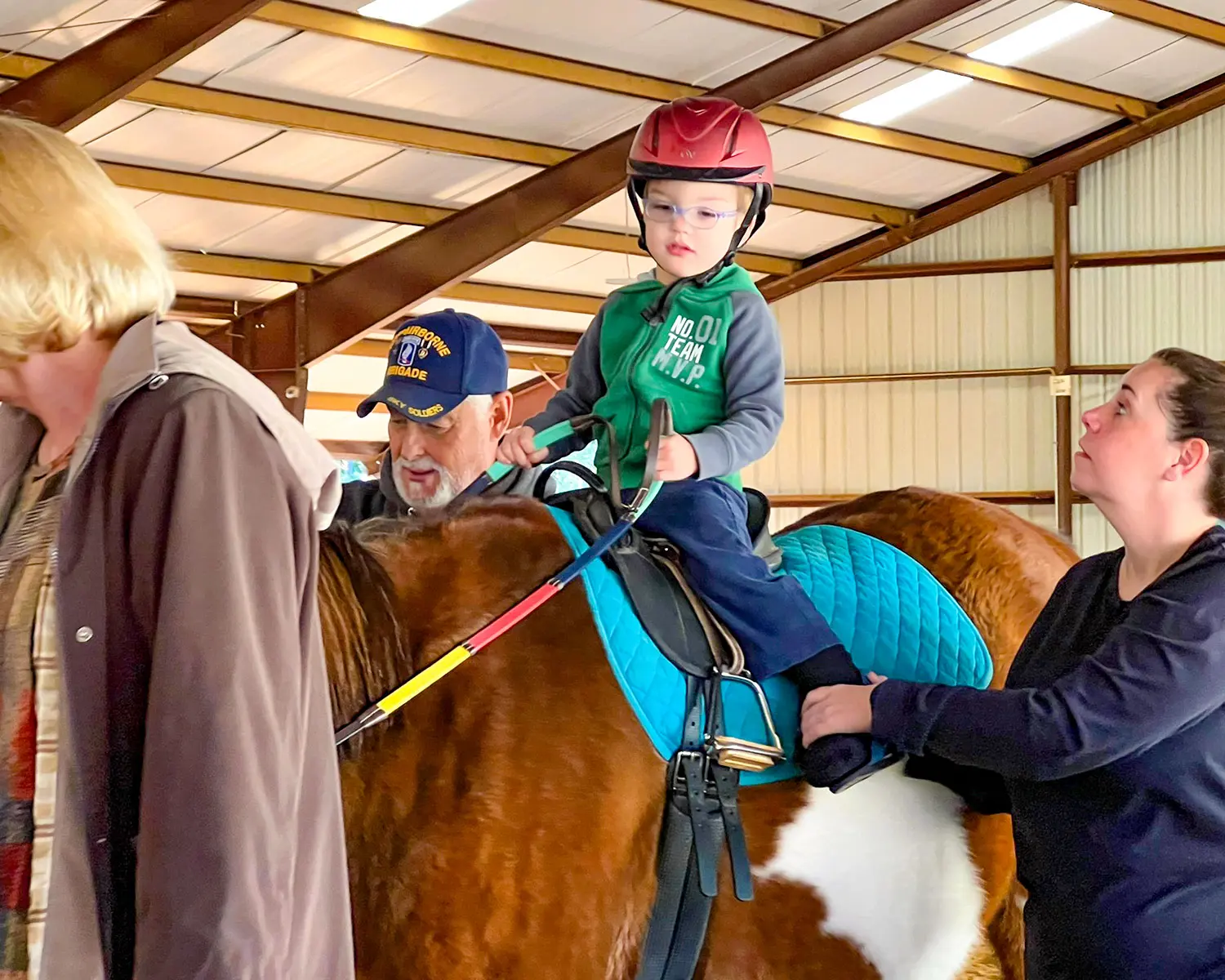My research for a blog series on equine-assisted services has me rethinking my nuanced relationship with horses as I get to know therapists, riders, parents, and stable hands. I even ended up becoming a volunteer! ABOVE PHOTO: Sally Shipley.
They were always there, in the end-table cabinet: my sister’s toy horse collection.
They were glass or some other breakable material, which didn’t make sense to me. So, I wouldn’t call them toys, per se. They held my curiosity, though. I would take them out and try to play with them, but I was a Barbies and baby dolls gal, and I didn’t know how to play with the horses more than to see how pretty they were and to play gallop them around. I was super worried about breaking them, and Barbies and baby dolls lent a lot more to one’s imagination, in my opinion.

Later, I watched my teenage sister care for a horse she was boarding. “Dusty” was owned by friends and we had a small barn, so the horse ended up with us. I don’t remember much about that time except that our cousin got on Dusty at a family gathering at the house, and she took off with him, charging around and around the house. I’m unsure how they finally stopped that adventure, but it is now family lore.
Above: me getting back in the saddle
I mounted effortlessly at my high school bestie’s riding arena in Medina, Ohio!
I remember our English Nana telling me horses were her favorite animals – because they were “so graceful and beautiful.” Born in 1901, at the advent of the automobile, Nana knew horses as beasts of burden, pulling carriages or carts and gracefully grazing and trotting in meadows. Queen Elizabeth II was famously an avid horsewoman, and since Nana was all about her Queen, this added to her equine interests. I regret not ever getting a horse and carriage ride for her. Although I now feel not great about making horses do that for people’s pleasure when in grueling hot environments.

Horses and I were not always on the best terms. My best friend in high school grew up in a horse family – well, ok, they were a human family who loved and lived the horse-world life – riding, owning, showing. Through her, I realized how some folks threw themselves, their money, and their time into something more than a hobby. It was a lifestyle.
Since I was a teenager and not born into a human family who lived a horse-world life, I thought it all was interesting, but I was a bit self-absorbed and didn’t fully understand the fascination and dedication. It was a whole other culture. Looking back, I wish I had validated my friend’s love of that world more and learned from her what it was all about. Now, as an adult, when I visit her at her Riding Academy, where she boards horses and gives lessons on driving and riding, she insists I get on a horse. I don’t fight it.
It scares me a little; I do not have so much fear of the horses themselves as of climbing into a saddle on a very tall beast. Parts of an old osteoporotic lady such as myself could break easily in a fall. I was in awe and maybe a little envious that my friend had this incredible connection with animals, specifically with these magnificent creatures who seemed so aloof and potentially dangerous to me. I always felt they wouldn’t like me or I’d do something to irritate them. They seemed potentially judge-y. (All things I worry about myself around other humans!). Remembering that feeling shows me I had, even then, some inkling that horses could communicate at some level.
Since that time, I have learned of the inexplicable relationship to be had with horses. I didn’t realize at first what that entailed. I now see it as something special, having recently attended a retreat for caregivers at a horse farm with folks trained in Equine-Assisted Learning, Horsemanship, and in psychology and counseling. I have seen and felt the horses’ intense yet subtle energy in healing body, mind, and spirit. Communicative relationships happen between horses and humans, but amazingly, they happen all the time between the horses as they live and move within their herd. Horses have their own needs and agency and deserve advocacy for their physical and emotional needs, as well as for their physical ones.
Besides my experience at the retreat, I gained some knowledge of Equine-Assisted Services by hearing about the experience of my adult niece (who has cerebral palsy), who benefitted from it as a child and into her teen years – – that’s Elizabeth in the photo above. As I developed my interest in writing about health and healing and specific modalities of alternative/auxiliary treatments, it became clear I wanted to write about this modality and the people and horses who provide it.

I have been introduced to many horses who have their own stories (told by their behavior or ways of moving, standing, and sleeping and from their known histories). I have learned about the challenges of caregivers, the socialization opportunities that open up for the riders in these therapy sessions, how centers are funded and supported, where the horses come from, and how they are vetted for service.
From my first dusty drive down the road to HorsePower Therapeutic Learning Center, in High Point, NC, until my recent signing up as a volunteer there, story after story has been generously and excitedly told me by staff, riders, volunteers, parents, and caregivers. And I myself can now speak to the fulfilling aspects of volunteering at this wonderful place, even including mucking out stalls and hauling shavings!
In future posts, I want to introduce some fantastic people and horses. Many hands and hearts, (and shovels, tractors, and wheelbarrows!) make HorsePower and other centers clean, safe, and beautiful places where learning, healing, and fun abound!
So, saddle up and Happy Trails! More to come soon.
And I need to give a big special thank you to the team at Horse Power who went out of their way to support my project!


